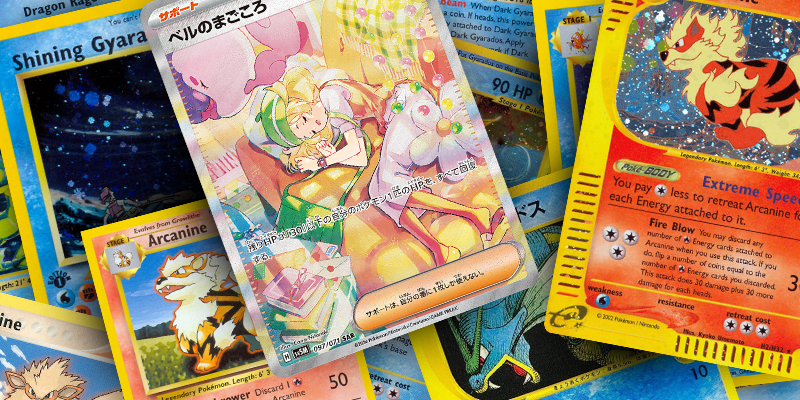Organizing your Pokémon cards is an important step to take if you want to protect and enjoy your collection. Whether you’re an avid player or a passionate collector, a well-organized collection ensures your cards are safe, easy to find, and ready for trading or playing.
In this guide, we’ll show you how to organize Pokémon cards effectively using various methods and strategies, while also introducing a powerful tool—the Binder Builder—to make organizing your collection a breeze.
Why Organizing Pokémon Cards Is Essential
Before diving into “how to organize pokemon cards,” it’s important to understand the benefits of keeping your cards organized:
- Card Protection: Organized cards are less likely to get damaged or lost. By keeping them sorted and safely stored, you protect your collection from bending, dirt, and exposure to the elements.
- Easy Access: Having your cards organized makes it simple to locate specific ones for trades, deck-building, or showcasing.
- Higher Value: Properly sorted and preserved cards maintain or even increase their value over time.
Different Methods to Organize Your Pokémon Cards
There are several popular ways to organize your cards, depending on your goals—whether you’re focusing on collection, play, or trades.
1. Organizing by Set and Release Date
A common approach is to sort your cards by their set and release date. This allows you to maintain a chronological order, which can be helpful if you’re aiming to complete certain sets or want to reference when cards were released.
2. Sorting by Card Type (Pokémon, Trainer, Energy)
Another option is to separate your cards by card type—Pokémon, Trainer, and Energy cards. Within these categories, you can further sort by subcategories, such as Basic Pokémon, Stage 1, and Stage 2, or by the type of Trainer or Energy card.
3. Organizing by Rarity
For collectors, sorting by rarity can be a satisfying way to highlight your most valuable cards. In this method, cards are grouped by their rarity level—common, uncommon, rare, ultra-rare, and secret rare.
4. Sorting by Card Number
Each Pokémon card has a number printed in the bottom corner. Sorting your collection by card number ensures every card from a set is in the proper order, making it easy to spot which ones you still need to complete your set.
How to Organize Pokémon Cards Using the Virtual Binder Builder
To streamline the organization process, consider using an online tool like the Virtual Binder Builder. This digital binder planner lets you visualize and plan your card collection layout before you begin physically organizing your cards, ensuring you use the most effective method from the start.

Create Custom Binders
Choose from a variety of layouts to display your cards in a way that suits your style.

Search & Add Cards
Quickly find and add your favorite Pokémon cards from our extensive database.

Manage Your Collection
Edit, rename, and update your binders anytime, anywhere.
How the Virtual Binder Builder Works:
- Visual Layout Planning: With the Virtual Binder Builder, you can experiment with different sorting methods—whether by set, rarity, or card type—and visually map out how your collection will look in the binder.
- Customizable Organization: The tool allows you to test various configurations to see what makes the most sense for your collection, making it easier to find the best approach before committing.
- Save Time and Effort: By using the Virtual Binder Builder, you can avoid constantly rearranging cards in your binder, ultimately saving time and effort.
Step-by-Step Guide on How to Organize Pokemon Cards
Once you’ve decided on an organization method, follow these simple steps to put your collection in order.
Step 1: Gather Your Materials
Before starting, gather everything you’ll need:
- Your Pokémon cards
- A high-quality binder (or multiple binders for larger collections)
- Card sleeves for protection
- Dividers and labels
- Your Virtual Binder Builder for planning
Step 2: Use the Virtual Binder Builder to Plan Your Layout
Start by using the Virtual Binder Builder to organize your collection digitally. Experiment with sorting your cards by different methods, such as by set or rarity, and choose the one that works best for you.
Step 3: Sort Your Cards by Your Chosen Method
After finalizing your plan, begin physically sorting your cards according to the method you’ve selected. If you’re sorting by set and release date, group all cards from a specific set together and place them in order of their release dates.
Step 4: Insert Cards into Binder Sleeves
Place each card into individual sleeves within your binder. For extra protection, use penny sleeves before inserting the cards into the binder pockets. Be mindful not to overstuff the binder, as this can cause cards to bend or warp.
Step 5: Label and Use Dividers
Use dividers and labels to separate different sections of your collection, making it easier to navigate through your binder. If you’ve organized by set, for example, each set should have its own labeled section.
Step 6: Maintain Your Collection
Organizing is not a one-time task. As you acquire new cards, make sure to regularly update your binder. This will keep your collection current and well-maintained.
Best Pokémon Card Binders to Consider
When choosing a binder for your collection, it’s important to invest in one that will keep your cards safe. Here are some of the best Pokémon card binders available:
- Ultra Pro Binders: Known for their durable, acid-free pages, Ultra Pro binders are ideal for long-term storage and protection.
- Vault X Premium Binders: These binders offer padded covers and zippered closures, providing extra protection from dust and moisture.
- Dragon Shield Card Codex: With its reinforced covers and high-quality materials, the Dragon Shield Card Codex is perfect for large collections.
Common Mistakes to Avoid When Organizing Pokémon Cards
To keep your collection in top shape, avoid these common pitfalls:
- Overstuffing the Binder: This can cause cards to warp or bend. Always leave a little room between cards to prevent damage.
- Failing to Use Card Sleeves: Even inside a binder, cards can rub against each other and get scratched. Using individual sleeves adds an extra layer of protection.
- Skipping the Planning Stage: Without a clear organization strategy, you may need to frequently rearrange your cards. Use tools like the Virtual Binder Builder to avoid this hassle.
Frequently Asked Questions (FAQs)
A typical Pokémon card binder holds around 360 cards, depending on the number of pages and the thickness of the cards.
For rare cards, use individual card sleeves and store them in a binder with acid-free pages. For added protection, consider using a binder with a zippered closure.
While any binder can technically hold Pokémon cards, specialized trading card binders offer better protection, as they are designed with features like acid-free pages and reinforced covers.
While it’s not essential, the Virtual Binder Builder is a helpful tool that can save you time and effort by allowing you to plan your collection layout before physically organizing your cards.
You should reorganize your binder as often as you acquire new cards. Regular updates ensure that your collection stays organized and easy to navigate.
Conclusion: Keep Your Collection Organized and Protected with the Virtual Binder Builder
Organizing your Pokémon cards doesn’t have to be a difficult task. By using the Virtual Binder Builder and following effective organization strategies, you can keep your collection neat, protected, and ready for play or trade.Start organizing your cards today with the Virtual Binder Builder, and enjoy the benefits of a well-maintained Pokémon card collection!

